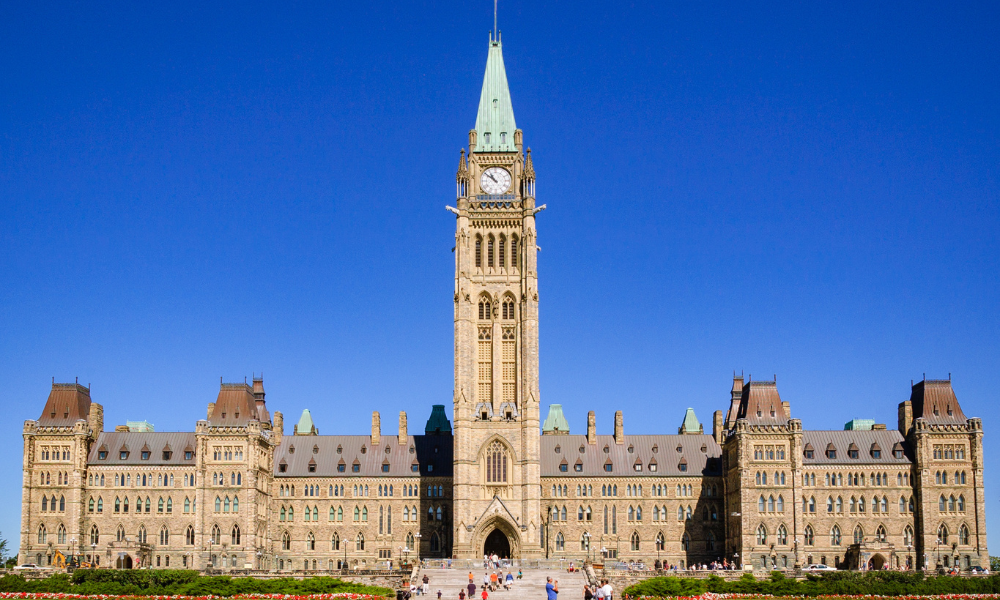
Union says layoffs of immigration workers will worsen 'dire situation,' impact 'businesses grappling with critical labour shortages'

Several unions are calling on the federal government to reconsider its plan to lay off thousands of workers at Immigration, Refugees and Citizenship Canada (IRCC) as the country faces numerous issues.
On Monday, the government department emailed employees about its “budget situation” which would result in job cuts of about 3,300, reported CBC.
"We estimate that about 80% of these reductions can be achieved by eliminating planned staffing, terms, and other temporary staffing commitments. The remaining 20 per cent of reductions will need to be achieved through the WFA (workforce adjustment) process and will affect indeterminate employees," the email read.
"Although the affected functions have been identified, the individual positions have not.”
Some term contracts could be terminated early. Affected workers would be given at least 30 days’ notice, according to the department.
Previously, the federal government announced that IRCC stopped converting term employees to permanent positions on Oct. 31, 2024. The development comes amid Ottawa’s multi-billion-dollar spending review, which aims to slash $15.8 billion in savings by 2027-28 and $4.8 billion annually thereafter, according to a previous report from Ottawa Citizen. The review, however, could mean a number of federal workers would lose their jobs.
The Public Service Alliance of Canada (PSAC) and its component union, the Canada Employment and Immigration Union (CEIU), expressed disappointment over the planned layoffs at IRCC. It’s “a devastating blow” that will “make a growing immigration crisis even worse,” said Sharon DeSousa, PSAC national president.
Last month, immigration processing wait times continued to reach “record-breaking backlog levels, and these cuts will only worsen an already dire situation,” said Rubina Boucher, CEIU National President. “Families longing to reunite, businesses grappling with critical labour shortages and a healthcare system desperate for skilled workers will all suffer the consequences of this reckless decision.”
The Canadian Association of Professional Employees (CAPE) shared PSAC’s sentiment, noting “the potential for drastic changes to U.S. immigration policy under the Trump administration” on top of the backlogs.
“A reduction in workforce capacity at this critical juncture could undermine our government’s ability to meet the evolving needs of the Canadian public and support the federal response to these new challenges,” says CAPE.
CAPE is calling for the job cuts to be put on hold “until Parliament resumes, and a clear national direction can be set”.
CAPE also listed several alternatives that could help the federal government with its cost-saving campaign.
“We support cost saving measures such as reducing this government’s outrageously wasteful reliance on outside contractors, addressing bloated senior management structures, and exploring ways to reduce real estate costs – such as by granting remote work rights to more employees. These alternatives can save money while minimizing the impact on public service capacity and our country’s ability to fight back.”
Meanwhile, PSAC is urging the government to collaborate on real solutions, such as “replacing expensive outsourcing contracts with in-house expertise to build a stronger immigration system that supports Canada’s future”.
“We now face a critical point in our relationship with the United States and must do everything to ensure that Canada’s ability to respond remains strong and capable, prepared to meet the challenges of both today and the future,” said CAPE.
The federal government has been making drastic changes to its immigration policies.
DeSousa noted that cutting services isn’t just bad for workers: “It impacts everyone in Canada who depends on services day to day,” she said.
However, nearly half of Canadians (47%) believe that the number of public sector workers should be reduced, according to a previous report from the Canadian Taxpayers Federation (CTF).
By 2024, the population of the federal public service stood at 367,772, according to Statistics Canada (StatCan). That number has been growing since 2010:
|
Year |
Population of the federal public service |
|---|---|
|
2023 |
357,247 |
|
2022 |
335,957 |
|
2021 |
319,601 |
|
2020 |
300,450 |
|
2019 |
287,983 |
|
2018 |
273,571 |
|
2017 |
262,696 |
|
2016 |
258,979 |
|
2015 |
257,034 |
|
2014 |
257,138 |
|
2013 |
262,817 |
|
2012 |
278,092 |
|
2011 |
282,352 |
|
2010 |
282,980 |
Employment in Canada overall increased by 91,000 (+0.4%) in December 2024, driven primarily by gains in full-time work (+56,000; +0.3%), according to StatCan.